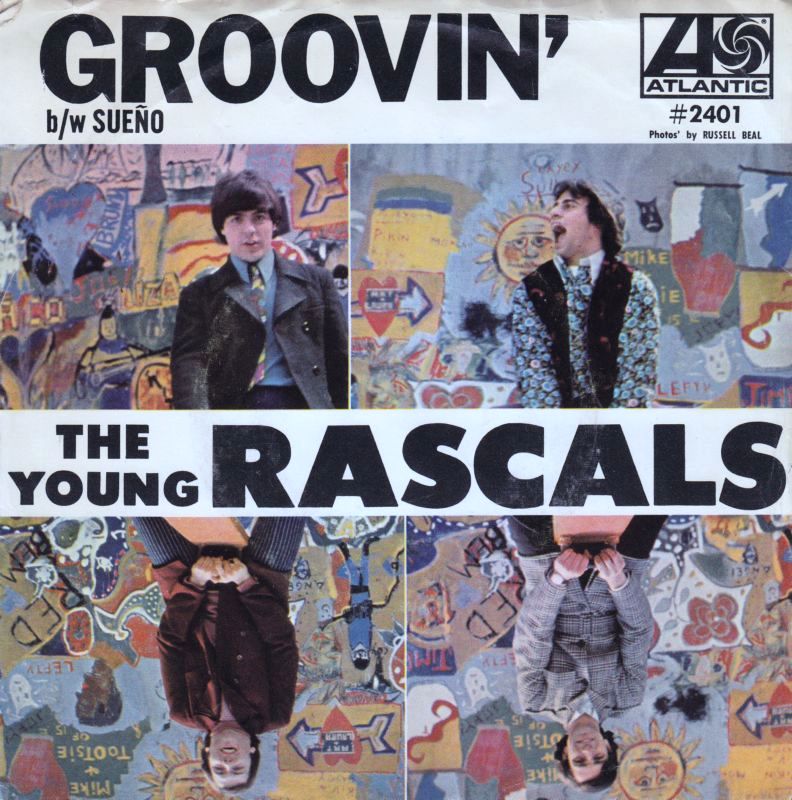May 20, 1967
- STAYED AT #1:4 Weeks
In The Number Ones, I'm reviewing every single #1 single in the history of the Billboard Hot 100, starting with the chart's beginning, in 1958, and working my way up into the present.
When I wake up every morning these days, even before I fumble for my glasses or dig crust out of my eye, I immediately reach for my phone. I check the news. I brace myself for the next cataclysm, which is always coming. It didn't used to be this way. We are deep into a time of flux and destabilization, a time when the entire world seems to be dismantling and remaking itself every day.
These past two years have been the most politically tumultuous of my life. And I wonder if what I'm feeling these mornings is anything like how it must've felt to work in popular music in the mid '60s. Every time people switched on their radios back then, they could've heard something that would rearrange their brains and upend their ideas of how pop music was supposed to sound. The difference, of course, is that today's feeling is terrifying and oppressive. Back then, it must've been liberating.
Take the Young Rascals. The New Jersey band -- formed out of the wake of Joey Dee And The Starliters, who'd already hit #1 at the height of the 1962 twisting craze -- came into the game with "Good Lovin'," an instant classic that applied garage-rock riffage to a minor R&B hit. "Good Lovin'" is fun and silly and propulsive and simple. And then, just over a year later, the Rascals were back at #1 with a radically, overwhelmingly different song.
"Groovin'" doesn't really belong to any genre. The Rascals were, at base, a white soul group, and bandleader Felix Cavaliere delivered his lines with a contented back-of-the-throat growl. But on "Groovin'," his band imports a lazy, ambling harmonica from folk music. There's a slight Latin influence in their conga shuffle and in the way Cavaliere plays his piano. In the backing vocals, we can hear the starry-eyed float of psychedelic pop. Where "Good Lovin'" was a charged-up sprint, "Groovin'" is an indolent stroll. It's an aesthetic 180.
But in its own way, "Groovin'" is a simple song, too. Like "Good Lovin'," it's about sex. The members of the Rascals, as working musicians, had all of their Friday and Saturday nights booked up, so Sundays were the only times they could spend with their girlfriends. When Cavaliere sings about "groovin' on a Sunday afternoon," he is singing about fucking. Maybe the real difference between "Good Lovin'" and "Groovin'" is that Cavaliere was getting laid more often, so it was less an exciting new frontier and more a pleasant way to relax with someone you like. (The way Cavaliere sings it, the line "life would be ecstasy, you and me endlessly" sounds a whole lot more like "you and me and Leslie," which would make it a song about a whole different kind of sex.)
"Groovin'" really loses something without the sense of excitement that the Rascals brought to "Good Lovin'." It's just not as good of a song. Cavaliere and his bandmate Eddie Brigati were new to writing songs; the whole idea of bands writing their own songs was still relatively fresh in those days. And "Groovin'" is clumsier and less expressive than "Good Lovin'."
But the song has its charms, too. The Rascals produced it themselves, and they figured out how to conjure the atmosphere the wanted: the birdsong sound effects, the sunny guitar twinkles, the way the harmonica wafts through it all. It's a contented sigh of a song -- one that takes in all the new sounds of the day and turns them into something easy and unforced.
GRADE: 5/10
BONUS BEATS: Here's the great Memphis bandleader Willie Mitchell's 1968 instrumental cover of "Groovin'":
https://youtube.com/watch?v=nf50swcp2_w
And here's the GZA's unimpeachable 1995 classic "Liquid Swords," which producer RZA built from a sample of Mitchell's cover of "Groovin'":
https://youtube.com/watch?v=wA49DaVmJWQ






